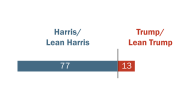Homeownership in the United States expanded at an historic pace from 1994 to 2004. In that span, the homeownership rate in the U.S. increased from 64.0% to 69.0%, or by 5 percentage points.10 A rise of this magnitude in the course of a decade is rare. Since 1900, homeownership increased at a faster pace only during the economic boom that followed the end of World War II.11
Prior to the latest jump, the national homeownership rate in 1994 had been virtually unchanged for three decades. In 1960, 62.1% of householders owned their homes. Over the next two decades, ownership spread slowly, reaching 65.6% in 1980 (Figure 1). The two recessions in the first half of the 1980s, coupled with high interest rates, caused the homeownership rate to drop to 63.8% in 1986. It remained near that level until 1994.

The surge in home buying after 1994 was fueled by the combination of an economic expansion from 1991 to 2000, low interest rates and the growth of subprime lending (Bostic and Lee, 2008; Gramlich, 2007). That climate was particularly beneficial for minority households. The homeownership rates of Hispanics, blacks and Asians were all boosted by more than the national average, narrowing the gap with white households.
However, the rapid growth of subprime lending had a downside. Loans originating in the subprime market are generally intended for applicants with poorer credit histories and less net worth than other borrowers, or other financial limitations. Such loans tend to be higher priced, in that they carry higher interest rates than standard mortgage loans. The result was a surge in mortgage delinquency rates and foreclosures starting in 2005.12
Troubles in the housing market translated into falling rates of homeownership for most groups from 2005 to 2008. The homeownership rate in the U.S. dropped from 69.0% in 2004 to 67.8% in 2008. Just as minority households benefited more from the initial gains in homeownership, they lost more in the post-2005 slump. Native-born Hispanics and blacks were especially hard hit. Immigrants, however, appeared to fend off declining prospects of ownership in the housing market.
This report focuses on the demography of recent developments in the housing market. The report first examines trends in homeownership from 1995 to mid-2008 among different racial, ethnic and nativity groups. The starting date, 1995, marks the beginning of the housing boom. It is also the year that data on immigrants became available on a regular basis in the Current Population Survey, the source of the housing trends data presented in this study. This section of the report also examines why homeownership among immigrant households appears to have been less affected since 2005.
The report then examines the prevalence of subprime lending to Hispanic, black and white households. Subprime loans are not directly identified in the source data, but characteristics of a close proxy—higher-priced loans—are available. Higher-priced loans are believed to encompass the vast majority of loans originating in the subprime mortgage market. These loans carry annual percentage rates (APRs) that exceed the rate on U.S. Treasury securities of comparable maturity by a specified threshold (3 percentage points for first-lien loans).
The final section of the report spotlights trends in foreclosure rates and how they varied across U.S. counties in 2008. Foreclosures are more prevalent in a small handful of states. The most notable of these states—California, Nevada, Arizona and Florida—are also home to large numbers of immigrants. The changing economic fortunes of Hispanic immigrants and the ties of those immigrants to the construction industry have been previously documented by the Center (Kochhar, 2008). A question that arises in this context is whether the presence of immigrants is associated with higher rates of foreclosures. The section also sheds light on how other economic and demographic factors are correlated with foreclosure rates across counties.
Appendices to the report contain additional tables and charts, details on the data and key elements of the methodology.




